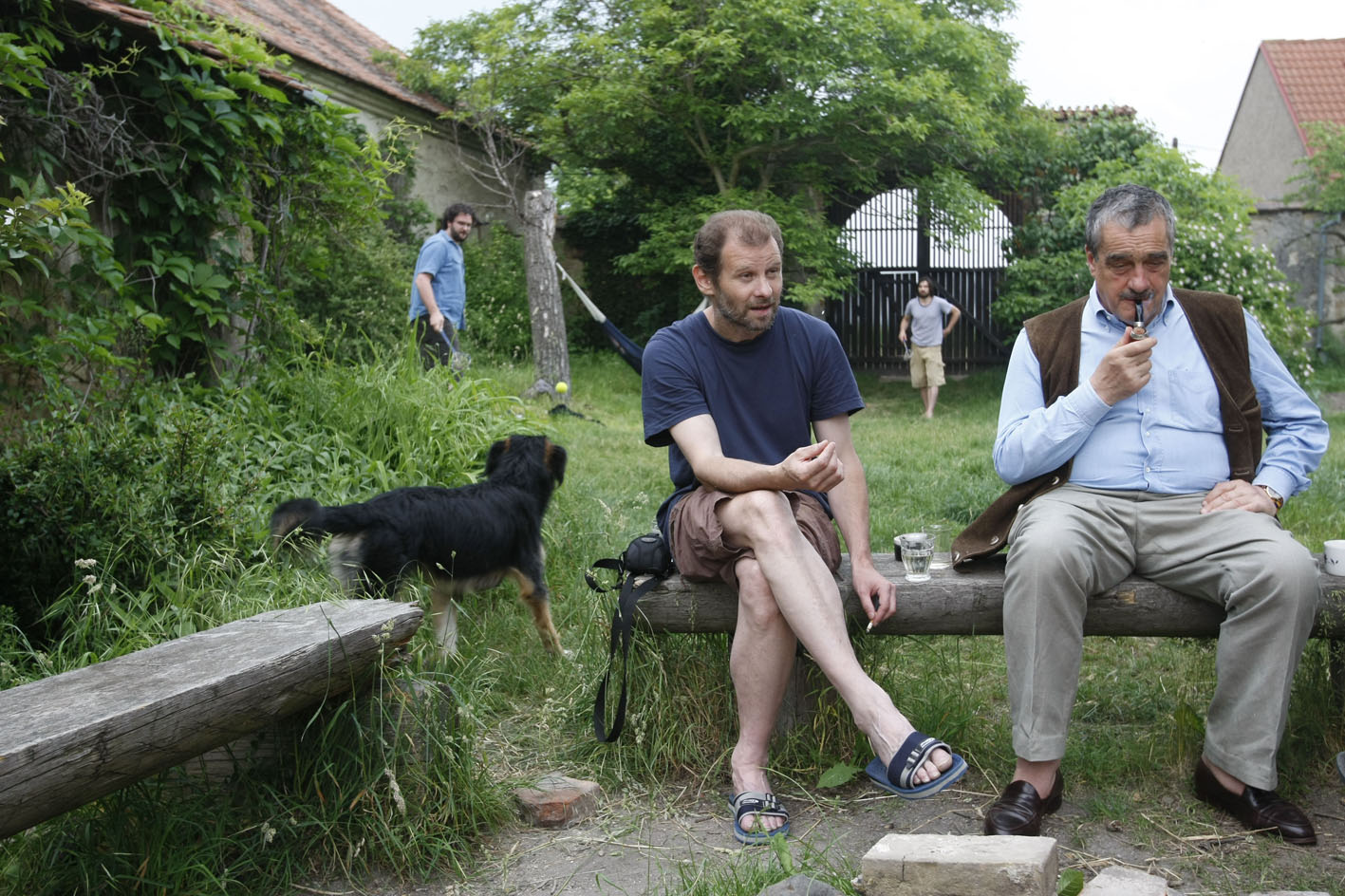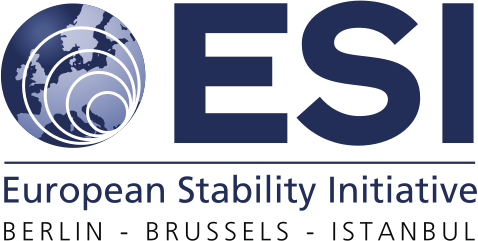Slovakia’s crucial moment
Martin Simecka and his view of 1998
“For Slovakia the biggest historical event is not 1989 but 1998,” says Martin M. Simecka, a writer and journalist born in 1957 in Bratislava to a Czech father and a Slovak mother. He was editor in chief of the leading Slovak daily newspaper SME from 1999 to 2006.
Simecka’s childhood and youth were strongly influenced by his father’s life as a dissident and writer. As he recalls in an article he wrote in 2008,
“My father Milan Simecka, who used to know [the Czech writer] Milan Kundera well, was a committed communist in the early fifties and a reformed communist in the sixties; the 1968 invasion turned him into a dissident, an influential writer and philosopher. For the last thirty years of his life, until his death in 1990, he devoted his entire intellectual energy to analysing the system that he had helped create. We spent hundreds, if not thousands of hours discussing the past, and I witnessed the torments of his self-questioning and his search for an answer to the Jasperian question of guilt [Karl Jaspers, a German philosopher, wrote “The question of German Guilt” - Die Schuldfrage - in 1947]. I felt fortunate that he gave me a chance to become a dissident too, although he thought it was something he was to be blamed for. The communist regime added me to its list of enemies at the tender age of fourteen, and deprived me of the option of becoming one of its quiet and conformist supporters, despite my initial efforts.” (Martin M. Simecka, “My Father’s Generation”, Salon, 27 November 2008)
Simecka’s first novel, The Year of the Frog, is about a young intellectual from Bratislava, barred in the early 1980s from attending college because of his father’s political activities. Initially, the book was published in instalments by underground publishing houses. A complete edition was issued only after the fall of communism in 1989. In 1992 it won the US Pegasus Prize for Literature.
In 1989, Martin Simecka, along with a group of fellow liberal intellectuals, founded “Public against Violence”, the sister movement of the Czech Civic Forum which helped bring down communism in Czechoslovakia.
“We didn’t know the first days what would happen, and we were a little scared of how the system would react … The solution was to play the role of non-violent people: that we just want to discuss, that we are peaceful on the streets and squares … Afterwards it became famous as a new kind of revolution, but I believe that a big reason for this was that the system was still very strong and could still kill.”
Following the excitement, the protests, the negotiations with the communist authorities during many days without sleep, the “real shock” for Simecka came in December 1989, when he went to Vienna. It was his first time in the West.
“I had no passport. Bratislava is next to the Austrian border and of course I watched Austrian TV in my childhood. We could see the Austrians from Sandberg, from the hill above Bratislava. So, for years and years, when looking to the forbidden land, you could see it, but you had a feeling you would never go there. That was my impression all my life: that I would never actually cross that border until my death. It was not easy to live with this image. Crossing the border, going west – the first real experience of this was very deep.”
But this was not the end of the transition. Very quickly, nationalism started to show its face. At first, some Slovaks demanded a stronger role within the federal state [the Czechoslovak Socialist Republic had been renamed Czech and Slovak Federative Republic in April 1990]. Among them was Vladimir Meciar, a lawyer who had been thrown out of the communist party after delivering a pro-reform speech after the Warsaw Pact invasion of Czechoslovakia in 1968. In 1989 he joined the new anti-communist reform movement “Public Against Violence” and became Slovak prime minister after the first multi-party elections in June 1990. Having appalled many former allies with his autocratic governing style and nationalist rhetoric, he was deposed as Prime Minster in April 1991 by the presidium of the Slovak Parliament. Meciar split from “Public against Violence”, set up his own party and went on to win the June 1992 parliamentary elections on a platform combining nationalism and leftist populism. Simecka recalls:
“For the first time I had to admit that maybe there was something wrong with the Slovak nation, not only with the system. It was a completely different feeling from blaming some abstract system, Leninism, Stalinism, whatever, to realize that it’s your own people who might be wrong and dangerous. I realized this very soon and it was depressing. And this depression lasted for a very long time.”
Together with the Czech Prime Minister, Vaclav Klaus, also elected in 1992, and without consulting their people– according to all opinion polls both Czechs and Slovaks were against a split – Meciar engineered the break-up of Czechoslovakia. On 1 January 1993, Slovakia and the Czech Republic became independent states.
“I knew that our problem would not be becoming an independent state, but being a democracy. Looking back at Slovakia in the early 1990s, it seemed there was almost no hope. Because the majority, the very big majority of the population was in favour of Mr. Meciar and the national party.”
Meciar tried to promote the idea that Slovakia could be a bridge between West and East. In Simecka’s eyes, this was “a dangerous myth, a terrible idea.”
“The danger was that we would be just a tool of the [great] powers, mostly a tool of Russia – not a bridge, but an arrow aimed at the heart of Europe. We were scared of this. We were afraid that Slovakia could become a small Serbia in central Europe … I believe these scenarios were not as unreal then as they seemed later. We were debating about this, discussing what we could do against it.”
Meciar won again in 1994. It took until the elections in September 1998 for the political opposition to win a majority in parliament. Meciar’s fall, says Simecka, was the outcome of the combined efforts of four groups of actors: NGOs; opposition politicians, who managed to overcome their difficulties and rivalries and forged a broad electoral alliance; artists, intellectuals, and the media; and foreign diplomats who began saying openly that something had to change for Slovakia to catch up with the EU enlargement train. Earlier in 1998 the EU had started accession negotiations with the Czech Republic, Estonia, Hungary, Poland and Slovenia. Slovakia was trailing far behind and the only one among ten former communist applicant countries singled out for not meeting the Copenhagen political criteria.
Meciar narrowly came first in the 1998 elections, but was unable to put together a majority. Eight opposition parties formed a coalition government led by Mikulas Dzurinda of the Christian Democratic Movement (KDH). Despite significant ideological and political differences, the coalition held together its full term. Dzurinda then headed another coalition government from 2002 to 2006, overseeing Slovakia’s EU accession on 1 May 2004.
Between 1999 and 2006 Martin Simecka was editor in chief of SME, Slovakia’s second-best selling daily.
“During the 1990s SME was a combative paper with one goal: ‘remove this guy [prime minister Meciar]!’ It was a paper that people, even if they did not read it, put under their arm as a symbol. They bought it just to say: I am for the opposition, I am against Meciar.
When I arrived in 1999, things had become much more complicated. In March 1999, the NATO attacks on Serbia began [in response to Serbian atrocities in Kosovo]. As a man who believed in NATO and in the US at the time, I naturally supported this. However, in just three months, the paper lost 15 thousand of its print run of 65 thousand. People were so angry at us that we supported the war, a war against Serbs, against Slavs, against our own people.
And I realized at the time that this would be a very difficult task – to make a paper that talks to people, to readers, a paper that explains things. You could not do this just through headlines. You had to have a debate; you had to explain to people how to read papers and form their own opinion.”
It took Simecka three years to get the paper back to a circulation of 65,000 copies. It was a time of learning – “for politicians, and for us in the media, how to behave, how to be fair.”
“The opposition-turned government started to be very angry at our paper because we criticized them. And even readers became angry … It was quite difficult to explain to readers that we could have a common opinion on basic issues such as EU enlargement, NATO membership, and reforms, but that this did not mean that we would support everything that this government was doing. And we started to criticize corruption very much, which made politicians furious ... For many years they were angry that we helped Meciar by criticizing their government.”
Slovak media were instrumental in getting public opinion on board behind the agenda of reforms and EU accession. For Simecka, covering the EU negotiations was one of the most difficult challenges as an editor.
“The question was: how to cover this [EU] story, to put it on the front page as it deserved? The negotiations themselves were a difficult and boring subject. There were so many paragraphs. You had to explain the complexity of that. We had to think when and how to interview somebody, or when to write about something very specific, to choose interesting stories. There were not many. There was always the ‘fog of negotiations’. To overcome it, we needed personalities, we needed stars who were able to explain the accession process and sell it … It is still a big problem: EU issues are too technical, and readers still do not understand how important this agenda is for the country.”
Addressing the problems of Slovakia’s poorer regions, where many people were initially worse off than during communism, was another challenge. SME ran stories about people who were negatively affected by economic reforms, who suffered – while also supporting reforms in commentaries.
“It was quite successful. People trusted SME because we didn’t forget about poor people who lived outside the capital and were far from the Bratislava elite. And we pushed the government to talk about this inequality.”
In the end, the 1998 changes that saw Meciar replaced by a pro-EU coalition turned out to be a crucial turning-point. As Simecka puts it,
“For Slovakia, in my view, the biggest historical event is not [the velvet revolution in] 1989 but 1998. The events in November ’89 didn’t originate in Bratislava; the change came from Prague. We know very well that Prague was the engine of those changes. We knew that in Slovakia we wouldn’t be able to do it without Prague.
1998 was the only historical event when the Slovaks had to fulfil their own task, their own duty. Slovakia changed on that very date. This brought some self-confidence, which for this nation was crucial.
However, Slovaks don’t remember 1998 as the crucial moment that it was. They will see it in the future, in the long run. In contrast to the Poles, Czechs and Hungarians, who had a long and continuous process [of EU integration], here in Slovakia it was a real battle. It was a battle for the future of central Europe. And the Slovaks did their job. It was absolutely crucial.”




